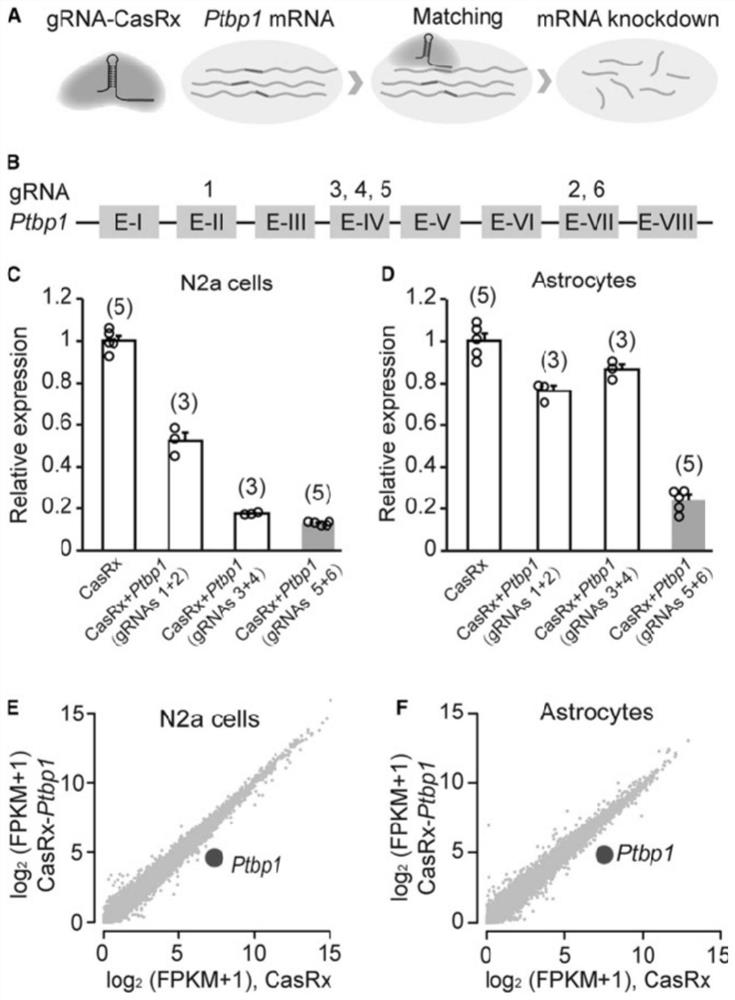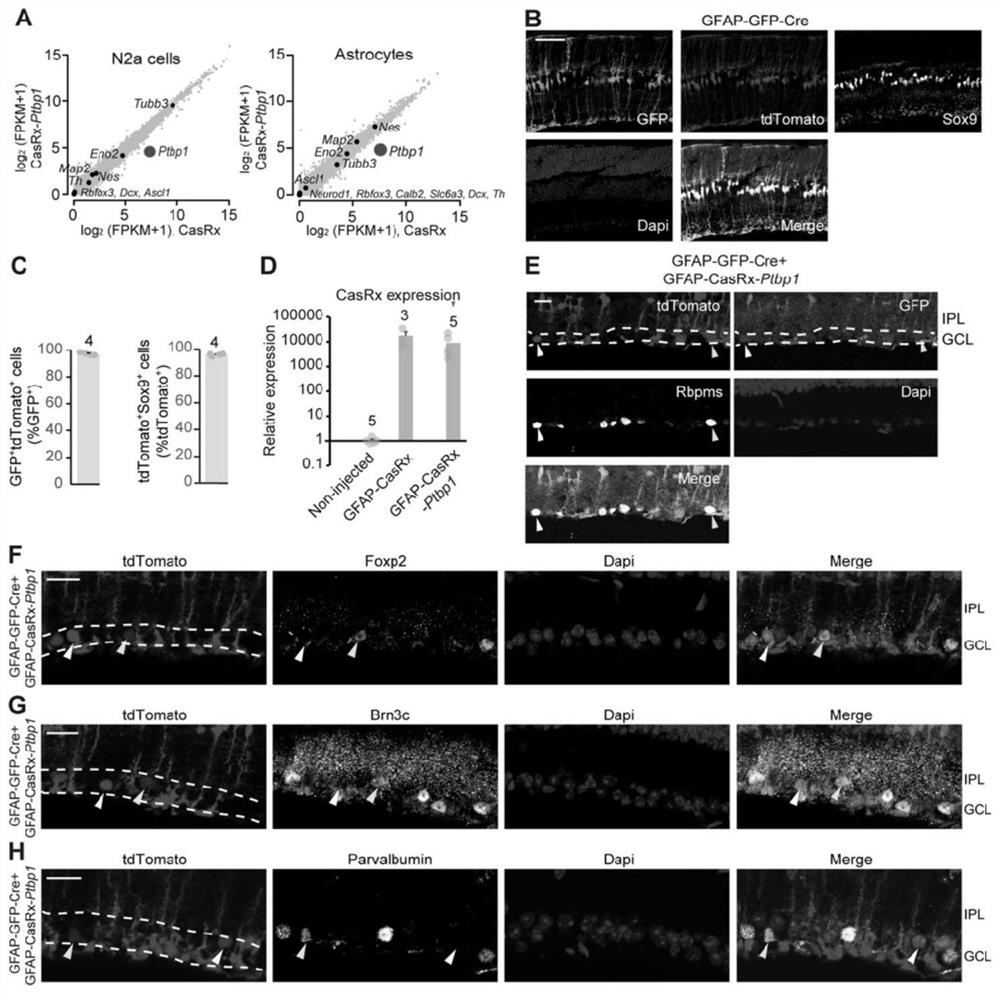Application of Ptbp1 inhibitor in preventing and/or treating nervous system diseases related to functional neuronal death
A neurological disease, neuron technology, applied in the field of biomedicine, can solve problems such as failure to prevent the development of the disease
- Summary
- Abstract
- Description
- Claims
- Application Information
AI Technical Summary
Problems solved by technology
Method used
Image
Examples
Embodiment 1
[0313]Example 1 Using CasRx to specifically knock down Ptbp1 in vitro
[0314]In order to determine the efficiency of CasRx-mediated Ptbp1 knockdown, six gRNAs targeting Ptbp1 were first designed, and their inhibitory efficiency was compared in cultured N2a cells and astrocytes (figure 1 A and 1B). It was found that co-transfection of two gRNAs (5 and 6 combinations) targeting Ptbp1 exon IV and VII regions can achieve 87%±0.4% and 76%±4% in N2a cells and astrocytes, respectively. Decrease (Figures 1C and 1D). The RNA whole transcriptome sequencing data further show that this knockdown is very specific (figure 1 E, 1F and 2A).
Embodiment 2
[0315]Example 2 Conversion of Muller glial cells into optic ganglion cells in mature retina
[0316]Previous studies have found that knockdown of Ptbp1 by shRNA can transform cultured mouse fibroblasts and N2a cells into functional neurons. Next, we will investigate whether Ptbp1 knockdown in the mature retina will transform Mueller glial cells in vivo Transform into optic ganglion cells. In order to specifically and permanently label the retinal Mueller glial cells, we injected AAV-GFAP-GFP-Cre into the eyes of Ai9 mice (Rosa-CAG-LSL-tdTomato-WPRE) to specifically induce tdTomato in Mueller glial cells. Expression in cells (figure 2 B and 2C). We also constructed AAV-GFAP-CasRx-Ptbp1 (gRNA 5+6) driven by the Mueller glial cell-specific promoter GFAP, hoping to specifically knock down Ptbp1 in Mueller glial cells and we also constructed Control virus AAV-GFAP-CasRx that does not target Ptbp1 (image 3 A and 2D). We first co-injected AAV-GFAP-CasRx-Ptbp1 and AAV-GFAP-Cre-GFP into the ret...
Embodiment 3
[0317]Example 3 Conversion of MG to RGC in a mouse model of retinal injury
[0318]In order to explore whether MG-induced RGC can supplement the lost RGC in a mouse model of retinal injury, we injected NMDA (200mM) into the vitreous of (NMDA, 200mM) Ai9 mice aged 4 to 8 weeks, which caused most The death of RGC and the decrease in the thickness of the inner plexiform layer (IPL). Two to three weeks after NMDA injection, inject AAV-GFAP-CasRx-Ptbp1 plus AAV-GFAP-GFP-Cre or control AAV virus (Figure 6 A and 6B). One month after AAV injection, we found that the number of Brn3a or Rbpms positive cells in the optic ganglion cell layer increased significantly in the retina injected with AAV-GFAP-CasRx-Ptbp1. Interestingly, most of these cells are positive for tdTomato. However, we did not find an increase in the optic ganglion cell layer injected with control AAV (Figure 6 C-6F). In order to determine whether MG-induced RGC is integrated into the retinal loop and has the ability to receive v...
PUM
| Property | Measurement | Unit |
|---|---|---|
| thickness | aaaaa | aaaaa |
Abstract
Description
Claims
Application Information
 Login to View More
Login to View More - R&D
- Intellectual Property
- Life Sciences
- Materials
- Tech Scout
- Unparalleled Data Quality
- Higher Quality Content
- 60% Fewer Hallucinations
Browse by: Latest US Patents, China's latest patents, Technical Efficacy Thesaurus, Application Domain, Technology Topic, Popular Technical Reports.
© 2025 PatSnap. All rights reserved.Legal|Privacy policy|Modern Slavery Act Transparency Statement|Sitemap|About US| Contact US: help@patsnap.com



